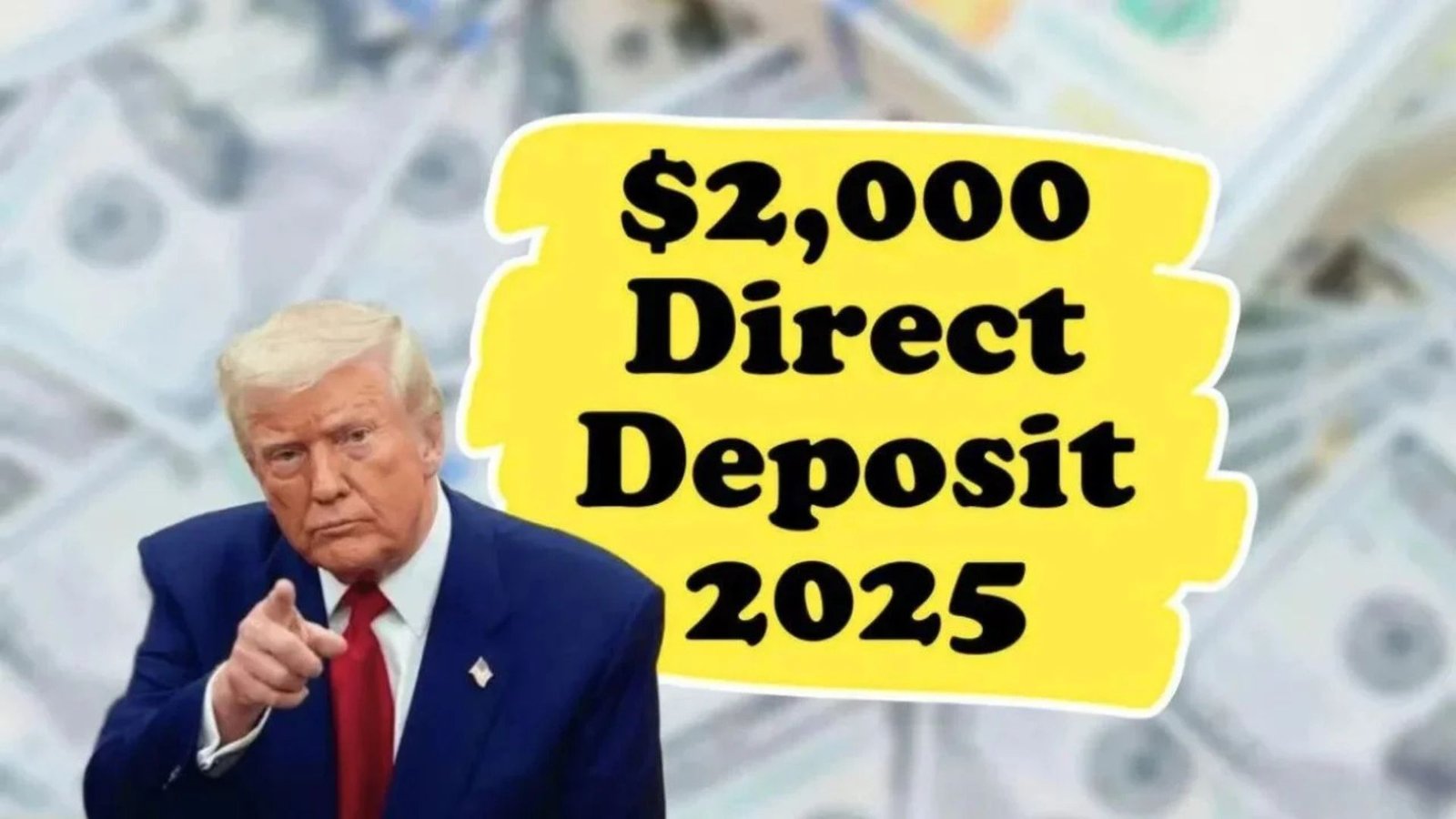Are you ready for a financial boost just in time for the holidays? The IRS is rolling out a $2,000 direct deposit in November 2025 to help millions of Americans cover everyday costs like groceries, gas, bills, and more. This isn’t just another tax refund—it’s a special one-time aid package designed to ease the squeeze from rising prices. No forms to fill out, no waiting in lines. If you qualify, the money lands automatically. But with millions checking their status, delays could happen if your info isn’t up to date.
In this guide, we’ll break it all down in plain English: what this payment means for you, simple steps to check eligibility, the full timeline, and tips to snag your cash quickest. Stick around—we’ve got a handy table, FAQs, and insider advice to beat the rush. Let’s dive in and make sure you don’t miss out on your $2,000 direct deposit!
What Exactly Is the $2,000 Direct Deposit Coming in November 2025?
Think of this as a quick cash injection from Uncle Sam—no strings attached. The $2,000 direct deposit is a one-off helping hand from the IRS and U.S. Treasury. It’s not called a “stimulus check,” but it acts like one: tax-free money wired straight to your account to help with basics when money feels tight.
Why Now? The Real Story Behind This Payout
Life’s getting pricier—think higher food bills, fuel costs, medicine prices, and rent hikes. This payment targets folks hit hardest by inflation, especially seniors, families, and everyday workers. It’s a smart move to keep the economy humming before the busy holiday rush. Best part? It’s automatic, using info you already gave the government last year.
Who Gets the Full $2,000 Direct Deposit? Simple Eligibility Rules Explained
Not everyone qualifies, but the rules are straightforward. The IRS pulls from your tax forms or benefit records to decide. No guesswork needed—just check if you fit the basics.
Step 1: Basic Must-Haves for Anyone
To even be in the running, you need:
- U.S. citizenship or legal permanent resident status (green card holders count!)
- A real Social Security Number (SSN) that’s active
If that’s you, great—now let’s talk money.
Step 2: Income Limits – How Much You Earn Matters
Your pay from 2023 or 2024 taxes sets the amount. Earn too much? You might get less or nothing. Here’s the easy breakdown in a table:
| Your Tax Filing Type | Max Income for Full $2,000 |
|---|---|
| Single (Just You) | $75,000 or less per year |
| Married Filing Together | $150,000 or less combined |
| Head of Household (e.g., Single Parent) | $112,500 or less |
Pro Tip: Over the limit? You could still get a partial payout based on how much you exceed it. File your taxes on time next year to lock in better odds.
Step 3: Auto-Qualify If You’re Already on These Government Lists
Big win for these groups—they get the full amount without lifting a finger:
- Social Security retirement folks
- Extra help from Supplemental Security Income (SSI)
- Disability support via Social Security Disability Insurance (SSDI)
- Veterans getting VA payments
- Railroad workers on RRB benefits
Even if you didn’t file taxes (like some retirees), you’re covered. But non-filers: Head to the IRS website soon to update details when the tool opens.
$2,000 Direct Deposit Schedule: Mark Your Calendar for November 2025
The IRS isn’t dumping all payments on day one—they’re spreading it out to avoid glitches. Expect your money between early and late November, depending on your setup.
Phase-by-Phase Breakdown
- November 8–15, 2025: First wave hits benefit receivers (Social Security, SSI, SSDI, VA groups). If you’re in this boat, check your account mid-week.
- November 16–25, 2025: Tax filers with bank info on file get direct deposits. Weekdays are prime—weekends might lag.
- Late November 2025 (After the 25th): Paper checks or debit cards mailed out for everyone else. Add 7–10 days for delivery.
Want it ASAP? Set up direct deposit now—it’s like express mail for your money.
How Does the IRS Send Your $2,000 Direct Deposit? Delivery Options Made Simple
The government uses what they already know about you—no new apps required. Pick your path:
- Direct to Bank: Fastest—hits in 1–2 days if your routing and account numbers match your last tax form.
- Mailed Check: Old-school but reliable; watch for it in your mailbox.
- Prepaid Card: Perfect if you skip banks—it’s like a gift card loaded with $2,000.
Quick Fix: Update Your Info Today
Changed banks? Moved? Log into IRS.gov or call Social Security to refresh details. It takes minutes and saves weeks of waiting.
IRS Rules & Scam Alerts: Stay Safe While Waiting for Your Payout
The IRS plays fair but scammers don’t. Follow these rules to keep your money safe:
- No Applications Needed: If someone asks for a fee to “claim” your payment, run—it’s a fraud.
- Official Channels Only: Updates come via mail or IRS.gov. No calls, texts, or emails demanding info.
- Track It Easy: When ready, use the free “Get My Payment” tool on the IRS site. It’ll show status like a package tracker.
Missed a step? File an updated return or use the non-filer tool. Penalties? None for honest mistakes—just fix ’em quick.
$2,000 Direct Deposit FAQs: Your Burning Questions Answered
Got doubts? We’ve got fast facts.
Do I Have to Do Anything to Get the Money?
Nope! It’s auto-sent if you qualify. Just keep records current.
What If I Don’t Have a Bank Account?
No sweat—opt for a check or card. Update preferences online.
Can Dependents or Kids Get It Too?
Usually not—it’s for adults meeting income rules. But families filing jointly often qualify as a group.
What Counts as “Income” for Eligibility?
Wages, self-employment cash, investments—straight from your tax return. Bonuses and tips included.
Is This Payment Taxed?
Zero taxes! It’s pure relief, not income.
Wrapping Up: Grab Your $2,000 Direct Deposit Before November Slips Away
November 2025’s $2,000 direct deposit is a game-changer for stretching your budget through tough times. From retirees banking on Social Security to working parents juggling bills, this payout puts real relief where it’s needed. With clear eligibility, a phased schedule, and easy delivery, getting yours is simpler than ever.
Don’t wait—double-check your IRS profile today. Share this with family who might qualify, and watch for updates on IRS.gov. Your financial fresh start is just weeks away. Questions? Drop ’em in the comments—we’re here to help!



